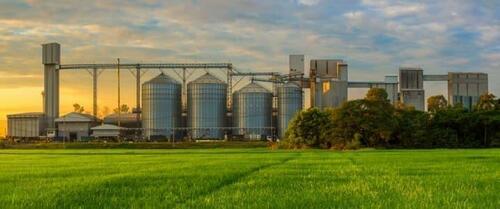Toxic Biosolids Threaten U.S. Farmland And Livestock
Authored by Kurt Cobb via oilprice.com,
Many years ago a civil engineer explained to me the wisdom of taking solid biological residues from sewage treatment plants—dubbed biosolids—and using them on farm fields and garden plots. After all, nature intended for human wastes to return to the soil to replenish it in the same way animal manure has long been used to fertilize farm fields.
“What about all the industrial chemicals that end up in wastewater,” I asked. He replied that these weren’t significant enough to be concerned. I was skeptical.
Fast forward to last week when the U.S. Congress took up a proposal to allocate $500 million to compensate farmers whose livelihoods have been undermined by applying biosolids—what most of us call sewage sludge—to their cropland. It turns out that those biosolids have poisoned both land and livestock across the United States. The ostensible concern is so-called “forever chemicals,” ones used to make such products as Teflon, firefighting foam, stain-resistant upholstery and water-resistant sports gear. These chemicals are linked to “cancer, liver damage, decreased fertility, and increased risk of asthma and thyroid disease.” They are dangerous to human and animal health even at very low levels. The U.S. Environmental Protection Agency (EPA) this year proposed limiting certain of these chemicals to less than 10 parts per trillion in drinking water. In two cases, the proposed limit is 4 parts per trillion.
A recent study of 2,500 human subjects showed that nearly all of them have PFAS chemicals—the formal name for this group of chemicals which number in the thousands—in their blood. Some 1,593 water systems in the United States are known so far to be contaminated. These chemicals ought to have the description “everywhere chemicals” added to their name.
But believe it or not, this is just the tip of the iceberg when it comes to contamination of biosolids. A 2022 report on chemicals found by EPA’s examination of biosolids around the country lists 726 chemicals. These include chemicals used in pesticides, drugs, cosmetics, and flame retardants as well as dioxins and polychlorinated biphenyls (widely used in electric transformers and highly carcinogenic).
For many years the EPA has assured farmers that biosolids are safe. The agency is still promoting them as a way to improve the fertility of the soil. (Inquisitive readers might like to know that organic agriculture regulations prohibit the use of biosolids or sewage sludge of any kind.)
The biosolids issue demonstrates clearly why the so-called circular economy is an impossibility in a modern industrial society. The chemicals produced by the modern economy are too many—over 150,000 by a recent count—and too easily dispersed to be segregated from the waste stream.
That’s just the way the chemical industry likes it. It would be exceedingly expensive to prevent all leakage of toxic chemicals into the environment—and downright counterproductive in the case of pesticides and herbicides which must be broadly dispersed to be effective. And, it would be considerably more expensive to find substitutes that are nontoxic and biodegradable. No one in the chemical industry is going to do either of these things if they don’t have to.
Ask yourself how many times the chemical industry and their mouthpieces in universities have told us not worry about chemicals in the environment. The concentrations are too small to hurt us, they say. Then, ask yourself whether you want to sit down to a meal of grains grown using biosolids and meat and milk products from animals dining on those same grains. Yum!
By Kurt Cobb via Resource Insights
Tyler Durden
Tue, 06/04/2024 – 22:00
via ZeroHedge News https://ift.tt/k9HFtu2 Tyler Durden
